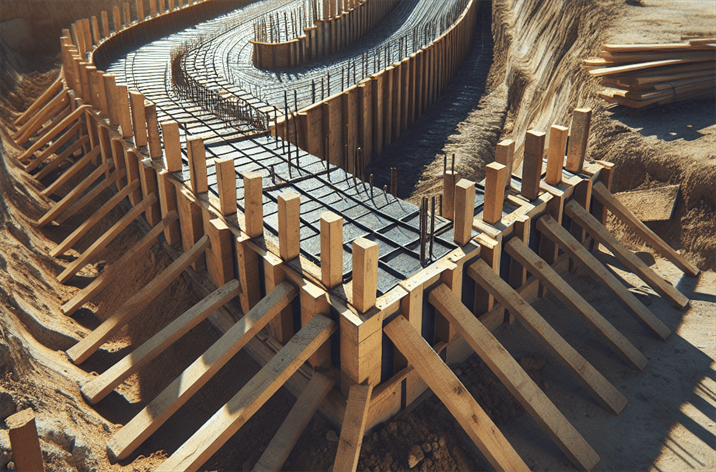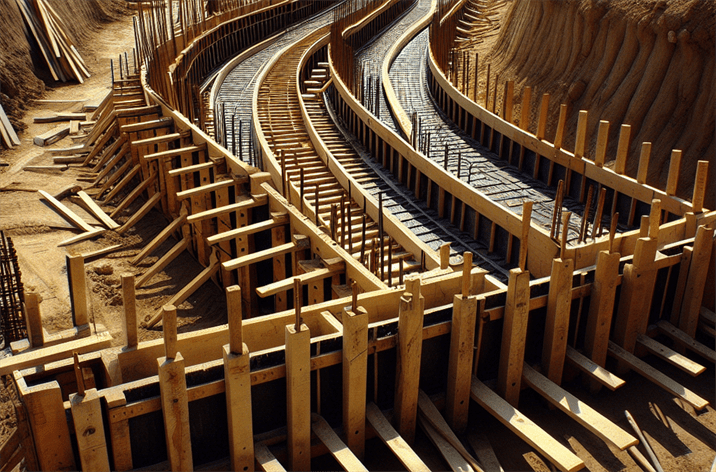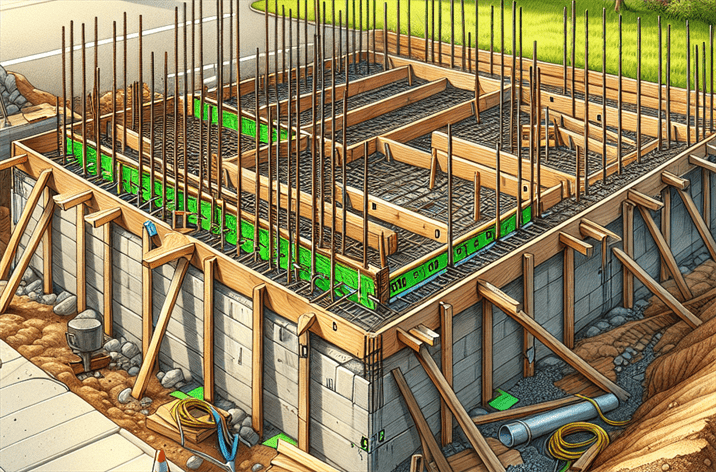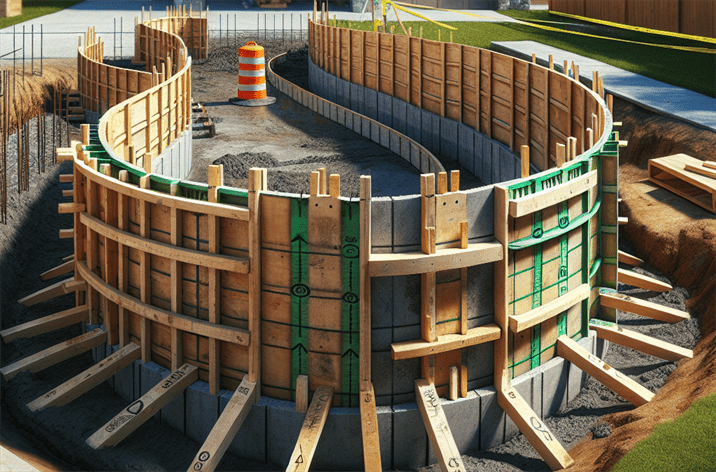Grade Stakes: A Simple Guide for Construction Professionals
Introduction
Did you know that grade stakes have been used in construction for centuries, evolving from simple wooden markers to advanced tools integral to modern engineering? These unassuming tools play a crucial role in ensuring that construction projects are executed with precision and efficiency. In the fast-paced world of construction, where accuracy can mean the difference between success and costly mistakes, understanding the function and application of grade stakes becomes paramount.
Grade stakes are essential for defining project boundaries, establishing elevation levels, and guiding the overall layout of construction sites. As construction technology advances, so too does the significance of these tools. Recent trends indicate that the use of grade stakes is not just about marking; it’s about enhancing communication among team members, improving site organization, and ensuring that every project is completed on time and within budget.
In this comprehensive guide, we will explore the definition of grade stakes, their historical context, their importance in construction, and the latest technology that surrounds them. We’ll also delve into real-world applications and showcase the benefits and challenges associated with using these vital tools. By the end of this article, construction professionals will have a clearer understanding of grade stakes and how to harness their potential for maximum project efficiency.
What are Grade Stakes?
Definition
Grade stakes are simple yet effective tools used in construction to mark specific points or lines, indicating the desired elevation and boundaries of a project. Often made of wood or other durable materials, these stakes are driven into the ground to serve as visual references for construction teams. They are essential for ensuring that structures are built at the correct height and alignment, ultimately contributing to the overall integrity of the project.
Historical Context
The use of grade stakes can be traced back to ancient civilizations, where builders relied on simple markers to define boundaries and levels. Over time, advancements in surveying and engineering led to the evolution of these tools. Today, grade stakes are integrated with modern technologies, such as GPS and laser leveling, to provide even greater accuracy and efficiency in construction.
The Importance of Grade Stakes
Grade stakes are crucial for several reasons:
- Establishing Baselines: They help set the foundation for construction by clearly marking the boundaries and elevation levels.
- Guiding Construction: By providing a visual reference, grade stakes ensure that all team members are on the same page regarding project specifications.
- Enhancing Accuracy: Proper placement of grade stakes reduces the risk of errors during construction, which can lead to costly rework.
Grade Stakes in the Context of Civil Engineering
In civil engineering, grade stakes are indispensable. They are used to define the layout of roads, bridges, and other infrastructure projects. Their ability to provide precise measurements makes them a fundamental tool in ensuring that large-scale projects adhere to design specifications.
Key Players or Contributors
Various advancements in technology have improved the design and functionality of grade stakes. Companies specializing in construction tools have developed more durable materials and innovative designs that enhance their usability. For a deeper understanding of grade stakes, explore our guide on affordable stakes and lath for construction needs.

How Does Grade Stakes Work?
The Mechanics of Grade Stakes
The process of using grade stakes is straightforward yet vital. Typically, they are installed at strategic points around the construction site to demarcate where digging, pouring, or building is to occur. The stakes are often painted or marked in a way that indicates the desired elevation, allowing construction teams to easily reference them throughout the project.
- Placement: Grade stakes should be placed at regular intervals around the project site, following the design plans.
- Elevation Measurement: Using leveling instruments, workers measure the height of each stake relative to a predetermined reference point, ensuring all elevations align with the project specifications.
- Communication: The visible markers serve as a point of reference for all team members, facilitating clear communication about the project’s progress.
Technological Foundations of Grade Stakes
Modern construction increasingly incorporates technology alongside traditional tools like grade stakes. GPS and laser technology have revolutionized how construction teams approach site layout. These technologies provide precise measurements that can be integrated with grade stakes to enhance accuracy.
- GPS Technology: By using GPS, construction teams can determine exact locations for grade stakes, ensuring they are placed accurately according to project plans.
- Laser Levels: These tools allow for precise elevation measurements, which can be crucial in large-scale projects where even minor errors can lead to significant problems.
Real-World Applications of Grade Stakes
Grade stakes are used in various construction contexts, from simple home builds to complex civil engineering projects. Here are a few examples:
Case Studies/Examples of Grade Stakes in Action
- Residential Construction: In a new housing development, grade stakes are used to delineate property lines and ensure that each home is built to the correct elevation, preventing flooding or drainage issues.
- Road Construction: During road upgrades, grade stakes help define the new road elevation, ensuring that it aligns with drainage plans to avoid future complications.
Benefits and Drawbacks of Grade Stakes
Benefits
- Clarity: Grade stakes provide clear visual markers that enhance communication and understanding among team members.
- Cost-Effective: Using grade stakes can save money by reducing errors and the need for rework.
- Versatility: They can be used in various construction scenarios, making them a flexible tool for any project.
Drawbacks
- Weather Sensitivity: Heavy rain or wind can displace grade stakes, leading to inaccuracies.
- Physical Damage: Grade stakes can be damaged or removed accidentally, which may require reinstallation and additional measurements.
For more insights, discover our guide on best practices for placing site grading stakes on uneven terrain.
Future Trends in Grade Stakes
As the construction industry continues to evolve, so too will the tools used by professionals. Here are some emerging trends related to grade stakes:
- Smart Technology Integration: The incorporation of smart technology will likely lead to more advanced grade stakes that can communicate data in real-time to construction teams.
- Sustainable Materials: As the focus on sustainability grows, expect to see grade stakes made from eco-friendly materials that reduce environmental impact.
Conclusion
Grade stakes are more than just simple markers; they are essential tools that contribute significantly to the accuracy and efficiency of construction projects. Understanding their history, mechanics, and applications can empower construction professionals to utilize them effectively. By integrating traditional practices with modern technology, such as GPS and laser levels, teams can enhance their project outcomes.
As construction continues to innovate, staying informed about tools like grade stakes will ensure that professionals are prepared to meet the challenges of tomorrow’s building projects. Embracing these tools not only leads to better project management but also enhances communication and collaboration among team members, ultimately paving the way for successful construction endeavors.
For those looking to optimize their construction practices, consider diving deeper into the world of grade stakes and their applications in modern construction.
Resource Links:
1. Construction Dive – An article explaining the importance and application of grade stakes in construction projects.
2. The Balance Small Business – A concise overview of grade stakes and their role in site preparation and leveling.
3. Indeed Career Guide – A guide detailing the function of grade stakes and their significance in construction site management.














